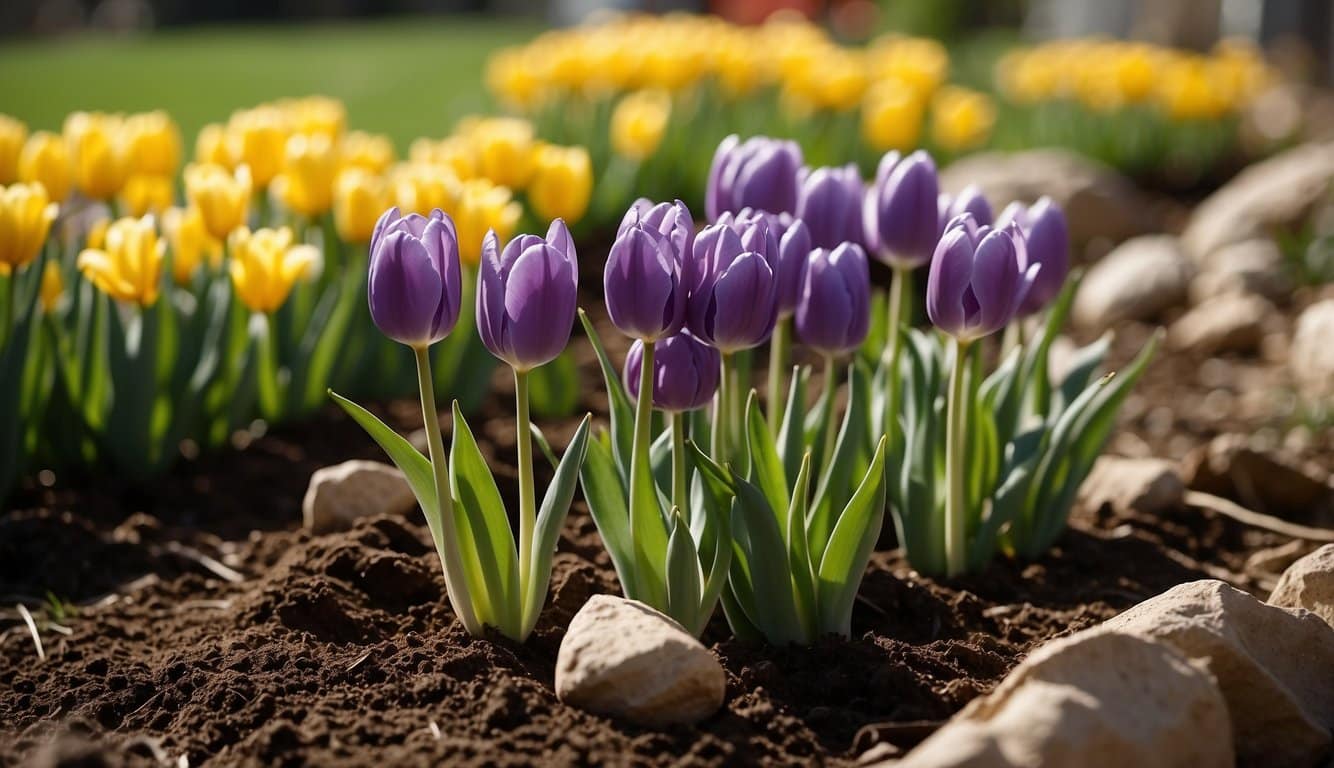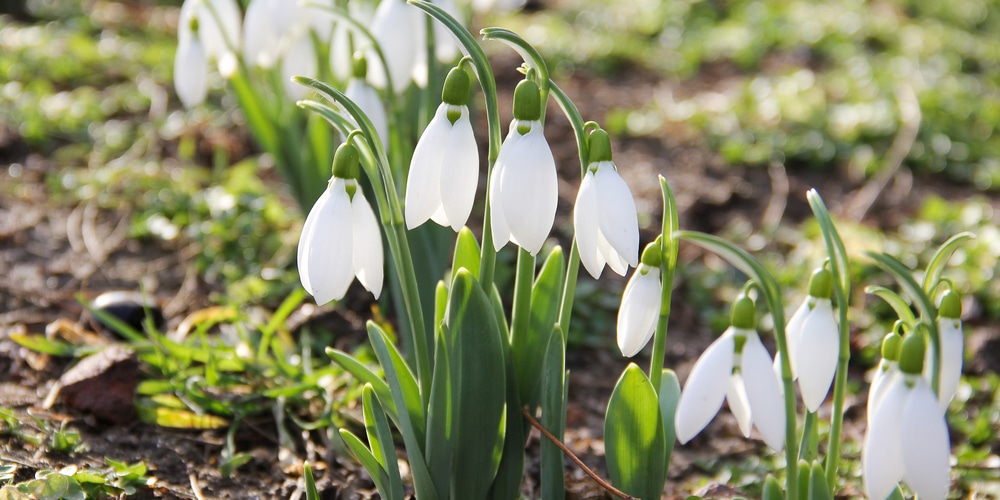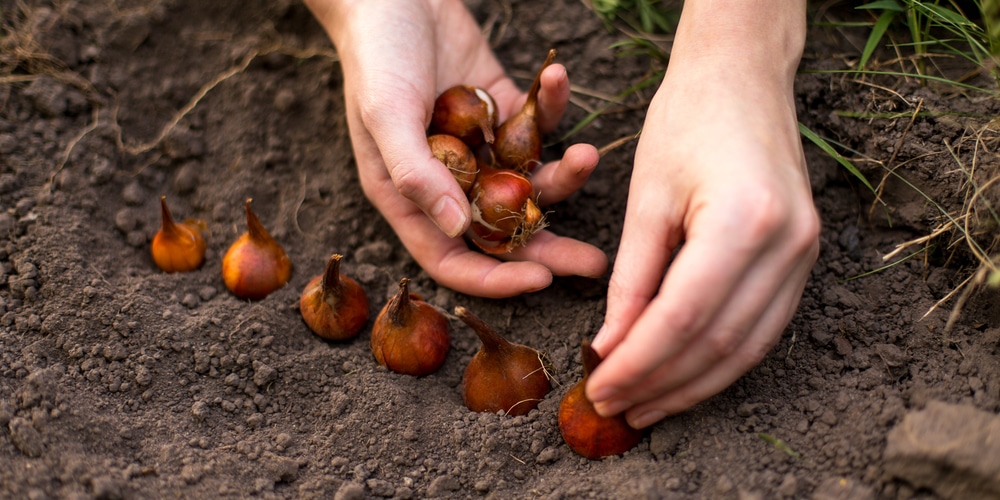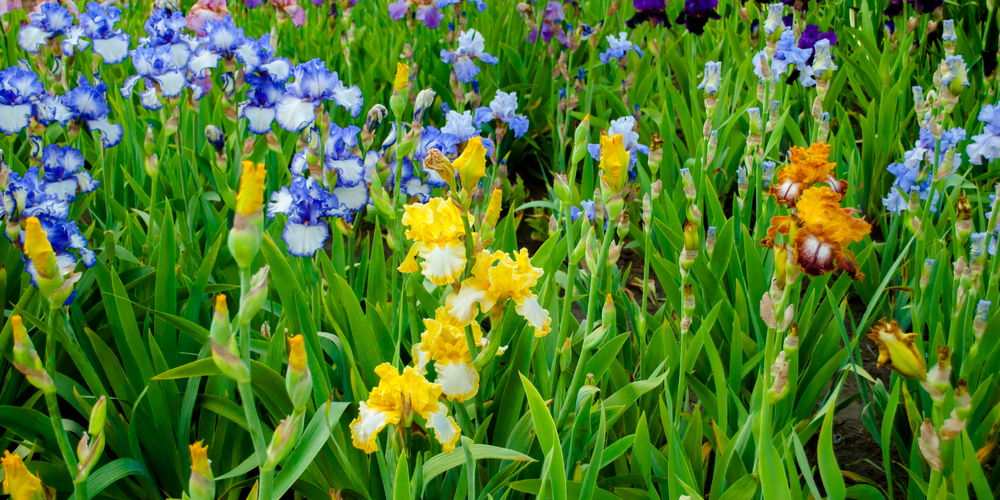Flower Bulbs: 101

When you’re planning your garden in Illinois, incorporating spring bulbs can add a vibrant touch to the early season landscape.
It’s important to understand the fundamentals of bulb planting to ensure your efforts yield beautiful blooms.
Selecting Bulbs: Choose firm, plump bulbs without any signs of rot or damage. Larger bulbs generally produce more blooms, so consider size when making your selection.
Timing: Aim to plant your bulbs in the fall, before the ground freezes. This timing allows the bulbs to establish roots and prepare for the spring display.
| Type of Bulb | Planting Depth |
|---|---|
| Small bulbs (e.g., crocus) | 3-4 inches |
| Large bulbs (e.g., tulips) | 6-8 inches |
Planting: Identify the nose (pointy side) of each bulb; this should face upward. The root plate (flatter side) is placed downward.
Space your bulbs 6 to 12 inches apart to allow room for spreading.
- Site Preparation: Choose a well-draining location with plenty of sunlight.
- Site Preparation: Dig and loosen the entire bed to the recommended depth for your bulbs.
- Planting Process: Press the bulbs gently into the soil, covering them with the excavated soil.
- Watering: Water the area thoroughly to settle the bulbs and encourage root development.
- Watering: If fall precipitation is low, continue watering weekly until the ground freezes to support early growth.
Remember, a well-prepared bed enhances drainage and longevity, setting the stage for a stunning spring bloom.
Selecting the Right Bulbs for Illinois
To ensure your garden thrives, it’s crucial to choose bulbs that are well-suited to the climate and soil conditions of Illinois.
Consider the timing of blooms to achieve a colorful display from early to late spring.
Early Spring Bloomers
Begin your spring with a burst of color by planting bulbs that will emerge as the frost begins to thaw.
Crocuses and snowdrops are hardy choices that can withstand the lingering chill of early spring in Illinois.
Plant crocus bulbs 3 to 4 inches deep and snowdrops at a similar depth for optimal growth.
Mid-Spring Performers
As the weather moderates, bulbs like tulips and daffodils take center stage.
They require a little more depth, with planting recommendations typically around 6 to 8 inches for tulips and a similar depth for daffodils.
These bulbs offer a wide range of colors and can be excellent focal points in your garden.
Late Spring Showstoppers
To conclude the spring season, consider alliums and irises as your showstoppers.
These late bloomers need well-draining soil and should be planted at a depth in accordance with their size. Alliums can be planted about 6 to 8 inches deep, while irises may vary, so check the specific variety’s requirements.
Planting Bulbs: How to Succeed
When you’re ready to plant spring bulbs in Illinois, proper technique is essential for ensuring a vibrant display. Here’s your guide for best practices.
Depth and Spacing:
- Large bulbs (e.g., tulips, daffodils): Plant approximately 8 inches deep.
- Small bulbs: Plant 3-4 inches deep.
- Space bulbs about 4-6 inches apart.
Soil Preparation:
- First, loosen the soil to the appropriate depth for your bulbs.
- Amend the soil with:
- – Compost
- – Organic matter
- – Bulb food or slow-releasing fertilizer
Planting:
- Position bulbs with the pointy end up and the flat end down.
- For uncertain bulbs, don’t worry too much; they generally find their way up.
After Planting:
- Gently tamp down the soil.
- Water the area well to settle the soil and initiate root growth.
- Cover with a couple of inches of mulch to insulate against severe winter temperatures.
Spring Bulb Care and Maintenance
When you’ve chosen the finest bulbs for the Illinois spring and planted them diligently, your task shifts to ensuring their continued health and vigor. Proper care and maintenance are crucial for vibrant blossoms.
Watering: After planting, thoroughly water your bulbs to help settle the soil around them.
If autumn is dry, continue watering weekly until the ground freezes.
Mulching: Apply a 2-inch layer of mulch over the planting area to conserve moisture, provide insulation during winter, and prevent weeds.
Fertilizing: Sprinkle a balanced, slow-release fertilizer over the soil after planting, but avoid placing it directly on the bulbs to prevent burns.
Layering Technique:
- Bottom Layer: Largest bulbs.
- Middle Layers: Mid-sized bulbs with 2 inches of soil between layers.
- Top Layer: Smallest bulbs.
This “lasagna” method will result in a staggered and full season of blooms.
- Do not remove foliage until it dies back naturally. This allows the plant to photosynthesize and gather energy for next year’s bloom.
- Digging up bulbs: If necessary due to disease or overgrowth, wait until the foliage turns yellow.
- Digging up bulbs: Then, gently lift bulbs with a garden fork and store properly.
Common Challenges in Growing Bulbs
Poor Timing
Planting your bulbs at the wrong time can lead to several issues.
In Illinois, your optimal planting window is late September through October.
Planting too early can make bulbs susceptible to Fusarium bulb rot, while too late can prevent proper root development before winter.
Disease
Fusarium bulb rot is a common problem if planted when temperatures are around 80 degrees. It causes yellow foliage and early bulb decay.
Soil Moisture
Illinois experiences a range of weather conditions that can either cause soil to be too wet or too dry.
The soil should be moist but well-draining; it should crumble when squeezed. Avoid working with soil that’s too wet to prevent damage to its structure.
Planting Depth
Incorrect planting depths can hinder bulb growth. A general rule for planting depth is three times the height of the bulb.
Animal Disturbance
Squirrels and other critters might dig up your bulbs.
Consider using chicken wire or planting in bulb cages to protect them.
Nutrient Depletion
Bulbs need nutrient-rich soil to thrive. Fertilizing the soil or using compost can provide the nutrients your bulbs require.
Frequently Asked Questions
When you’re gearing up to plant spring bulbs in Illinois, you’ve likely got a number of questions on your mind. Below are answers to some common queries to help you achieve a vibrant and successful spring bloom.
What are the best conditions for planting spring bulbs in Illinois?
For spring bulbs to thrive in Illinois, choose well-drained soil and an area with full to partial sunlight.
Ensure the soil crumbles easily; if it forms a ball, it’s too wet. Incorporate compost or organic matter to enrich the soil.
Which spring bulbs are easiest for beginners to grow successfully?
Daffodils, tulips, and crocuses are great for beginners because of their hardiness and minimal care requirements.
They’re less prone to common diseases and can thrive under a variety of conditions.
How frequently is watering necessary for newly planted spring bulbs?
After planting, give your spring bulbs a thorough watering.
Thereafter, water them when the top inch of soil feels dry until the ground freezes. Once established, most spring bulbs are quite drought-tolerant and will require less frequent watering.
What are some common examples of spring-flowering bulbs?
Some common spring-flowering bulbs include tulips, daffodils, hyacinths, crocuses, and alliums.
These varieties offer a wide range of colors, shapes, and bloom times for extended spring interest.
Is there an optimal time of year to plant spring bulbs in Illinois?
The optimal time to plant spring bulbs in Illinois is late September through October.
This timing allows for a good root system development before winter while ensuring they’re settled before the frost.
Can you list some non-tunicate bulbs that are suitable for spring planting?
Lilies and lily of the valley are examples of non-tunicate bulbs suitable for planting in the spring.
They do not have the protective skin, called a tunic, that is found on bulbs like tulips and daffodils.
Last update on 2025-06-06 / Affiliate links / Images from Amazon Product Advertising API





